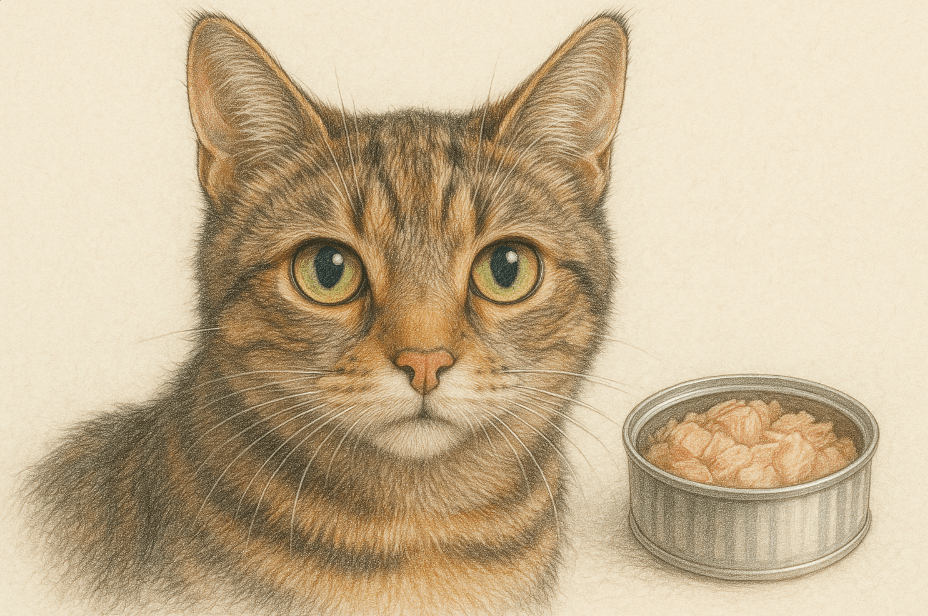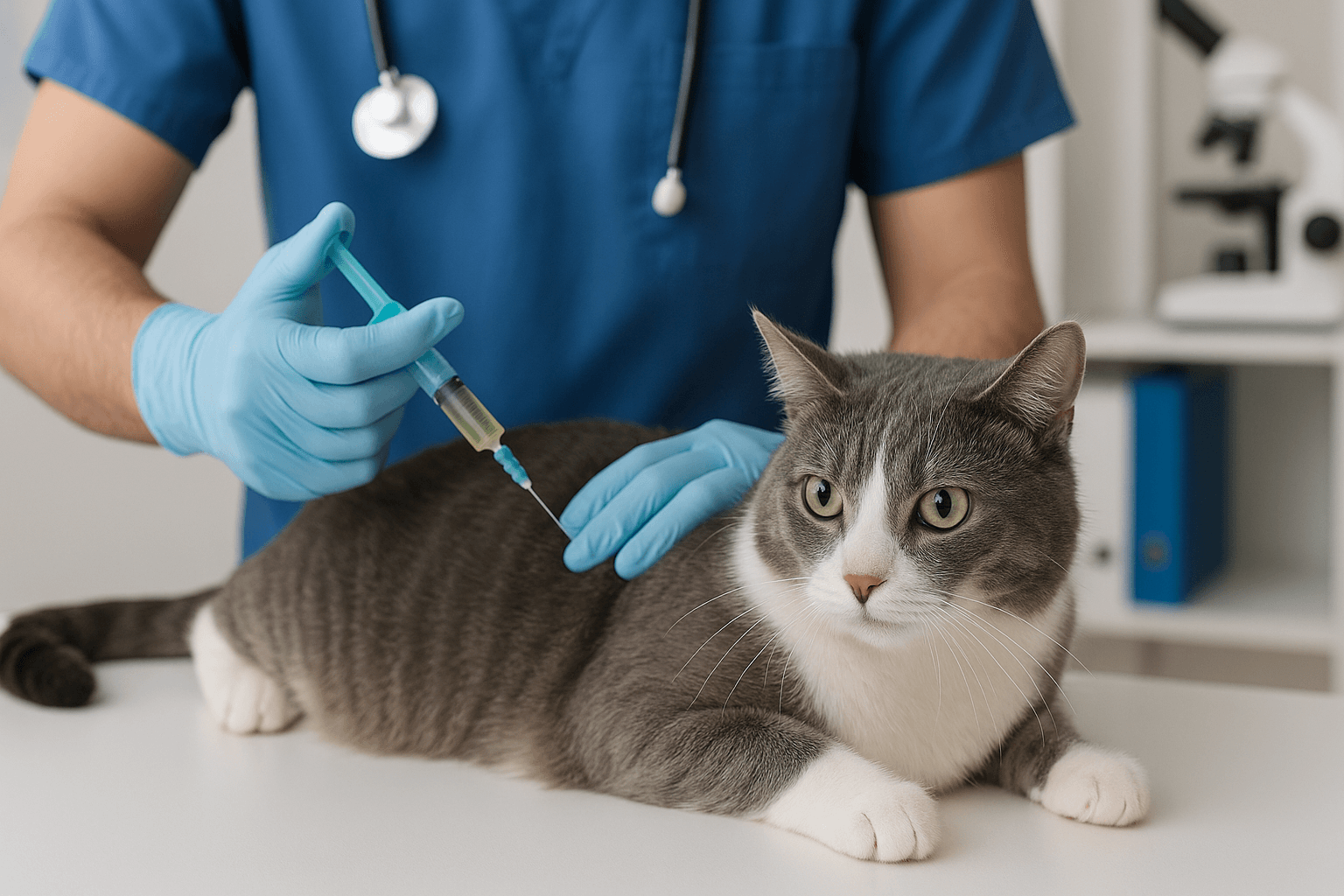Can Cats Eat Tuna?
Tuna is a popular fish that many people enjoy, and it’s no surprise that cats are often drawn to its strong aroma and rich flavor. But can cats eat tuna safely? While this fish can be an occasional treat for your feline friend, there are important considerations to keep in mind. Feeding tuna to your cat without understanding the potential risks could lead to health issues or nutritional imbalances. In this blog post, we’ll explore everything you need to know about feeding tuna to cats, from its benefits to its dangers, and provide practical tips for keeping your pet healthy and happy.
Potential Benefits of Feeding Tuna to Cats
When given in moderation, tuna can offer some benefits to cats, especially as a way to add variety to their diet. However, it’s essential to understand what makes tuna appealing and how it can positively impact your cat’s health.
Rich Source of Protein:
Tuna is packed with high-quality protein, which is essential for muscle development and overall energy levels in cats.Omega-3 Fatty Acids:
These healthy fats support skin and coat health, reduce inflammation, and may even improve cognitive function in older cats.Hydration Boost:
Canned tuna in water can help increase your cat’s fluid intake, which is particularly beneficial for cats prone to dehydration.Encourages Appetite:
The strong smell of tuna can entice picky eaters to consume their food, especially if they’re recovering from illness.Occasional Treat Option:
When offered sparingly, tuna can serve as a special reward or bonding moment between you and your cat.
While these benefits make tuna a tempting option, moderation and preparation are key to avoiding potential downsides.
Risks of Feeding Tuna to Cats
Despite its appeal, tuna comes with several risks that every cat owner should be aware of. Overfeeding or improper preparation can lead to serious health concerns.
Mercury Toxicity:
Tuna contains traces of mercury, which can accumulate in a cat’s system over time and cause neurological damage.Nutritional Imbalance:
Cats require specific nutrients like taurine, which tuna alone cannot provide in sufficient amounts, leading to deficiencies if fed excessively.Salt and Additives:
Canned tuna often contains high levels of sodium, spices, or oil, which can upset your cat’s stomach and harm their kidneys.Thiamine Deficiency:
Feeding raw tuna regularly can destroy thiamine (vitamin B1) in a cat’s body, resulting in neurological problems.Addiction Risk:
Some cats develop a preference for tuna over their regular food, refusing balanced meals and risking malnutrition.
Understanding these risks ensures you can make informed decisions about including tuna in your cat’s diet.
Check this guide 👉Are Pine Trees Toxic to Cats? Best 7 Expert Tips!
Check this guide 👉Can Cats Eat Chorizo? Best 7 Expert Tips!
Check this guide 👉Can Cats Eat Pork Rinds? Best 7 Expert Tips!

Safe Ways to Offer Tuna | Dangers of Unsafe Tuna Choices |
|---|---|
Plain canned tuna in water | Tuna packed in oil or brine |
Small portions as an occasional treat | Feeding large amounts frequently |
Fresh, cooked tuna (no seasoning) | Raw tuna containing harmful bacteria |
Mixing small amounts with cat food | Tuna with added salt or preservatives |
Choosing low-mercury fish alternatives | Tuna with bones or sharp fragments |
How to Safely Feed Tuna to Your Cat
If you decide to share tuna with your cat, following these guidelines will help minimize risks and ensure their safety.
Choose Plain Varieties:
Opt for canned tuna in water without added salt, oil, or flavorings to avoid digestive upset.Limit Portion Sizes:
Offer only a teaspoon or two as a treat, ensuring it doesn’t replace their regular, nutritionally balanced meals.Avoid Raw Tuna:
Raw fish can harbor parasites and bacteria, posing health risks to your cat. Always cook tuna thoroughly if using fresh options.Check for Mercury Levels:
Select lower-mercury varieties like skipjack tuna rather than albacore, which tends to have higher concentrations.Supplement Balanced Meals:
Use tuna as a topping or mix-in rather than a standalone meal to prevent nutrient deficiencies.
By adhering to these precautions, you can safely incorporate tuna into your cat’s diet without compromising their health.
Signs Your Cat May Be Suffering from Tuna Overconsumption
If your cat has been eating too much tuna, certain symptoms may indicate underlying health issues. Watch for these warning signs and consult your veterinarian promptly if they appear.
Vomiting or Diarrhea:
Digestive distress is a common reaction to excessive tuna consumption or poor-quality preparations.Lethargy or Weakness:
Thiamine deficiency caused by raw tuna can lead to fatigue and difficulty walking.Loss of Appetite:
A sudden refusal to eat regular food may signal addiction to tuna or other dietary imbalances.Coat and Skin Problems:
Dull fur, flaky skin, or hair loss could indicate a lack of essential nutrients typically found in cat food.Neurological Symptoms:
Tremors, seizures, or unsteady movements might suggest mercury poisoning or thiamine deficiency.
Recognizing these signs early allows you to address potential complications before they escalate.
Common Mistakes to Avoid When Feeding Tuna to Cats
Feeding tuna to your cat requires careful consideration to avoid mistakes that could endanger their health. Here are some pitfalls to watch out for.
Feeding Too Frequently:
Regularly offering tuna can displace balanced meals and lead to nutritional deficiencies.Choosing Flavored Varieties:
Seasoned or flavored tuna contains additives that can irritate your cat’s digestive system.Ignoring Mercury Content:
High-mercury tuna poses long-term health risks, especially for older cats or those with existing conditions.Using Raw Fish:
Raw tuna carries the risk of bacterial contamination and thiamine destruction, harming your cat’s health.Overlooking Allergies:
Some cats may be allergic to fish; monitor for signs like itching, swelling, or vomiting after feeding.
Avoiding these mistakes ensures a safer and healthier experience for your cat.
Alternatives to Tuna for Cats
If you’re looking for fish-based treats or meal additions for your cat, consider these safer alternatives that provide similar benefits without the risks associated with tuna.
Cooked Salmon:
Rich in omega-3 fatty acids, cooked salmon supports skin and coat health when offered in moderation.Sardines in Water:
Low in mercury and high in nutrients, sardines are a great alternative for occasional treats.Mackerel (in Moderation):
This oily fish provides essential fats but should be fed sparingly due to its strong flavor.Fish-Based Commercial Cat Foods:
Many brands offer nutritionally balanced formulas featuring fish as a primary ingredient.Homemade Fish Recipes:
Preparing plain, cooked fish at home allows you to control ingredients and portion sizes.
These alternatives allow you to cater to your cat’s taste buds while maintaining their health.
Understanding Your Cat’s Natural Instincts Around Fish
Cats are naturally drawn to fish due to its strong smell and rich taste, which aligns with their carnivorous instincts. Understanding why they crave fish helps explain their fascination.
Evolutionary Preference:
Wild ancestors of domestic cats likely consumed fish scavenged near water sources, ingraining a preference for seafood.High-Protein Appeal:
Cats instinctively seek protein-rich foods, and fish satisfies this dietary requirement.Aroma Attraction:
The potent smell of fish triggers curiosity and excitement, making it irresistible to many cats.Nutrient Seeking:
Fish contains vitamins and minerals that appeal to cats’ natural dietary needs, though modern diets already meet these requirements.Comfort Food Association:
For some cats, fish becomes associated with positive experiences, such as bonding moments with their owners.
By recognizing these instincts, you can better manage your cat’s cravings while prioritizing their well-being.
Frequently Asked Questions About Cats and Tuna
How often can I give my cat tuna?
Limit tuna to once or twice a month as an occasional treat, not a regular part of their diet.
Is canned tuna safe for cats?
Yes, but only plain canned tuna in water. Avoid varieties with added salt, oil, or seasonings.
Can kittens eat tuna?
Kittens have sensitive digestive systems, so it’s best to avoid giving them tuna altogether.
What are safer fish alternatives for cats?
Cooked salmon, sardines, or mackerel in moderation are healthier options due to lower mercury levels.
What should I do if my cat eats too much tuna?
Monitor for symptoms of illness and contact your vet immediately if you notice any concerning changes.
Balancing Treats and Nutrition for Your Cat
While tuna can be a tasty and nutritious treat for cats when given responsibly, it’s crucial to prioritize their overall dietary needs. Overindulgence or improper preparation can lead to health problems that outweigh the benefits. By understanding the risks and rewards of feeding tuna, you can strike a balance that keeps your cat both happy and healthy. Remember, moderation is key—always consult your veterinarian if you’re unsure about introducing new foods into your cat’s diet. With care and attention, you can enjoy sharing the occasional tuna treat while ensuring your feline friend thrives.
Is the Rubber Tree Cat Safe? Best 7 Expert Tips! Discover expert advice on keeping rubber plants safely in cat-friendly homes and learn top tips for pet-safe plant care.
Low Red Blood Cell Count in Cats: Best 7 Expert Tips! Discover causes, symptoms, and treatment options for feline anemia. Learn how to support your cat’s health effectively with expert advice.
Understanding Megacolon Treatment: Best 7 Expert Tips! Discover effective strategies to manage feline megacolon, from dietary changes to surgical options, ensuring your cat’s comfort and long-term health.
How to Register a Therapy Cat: Best 7 Expert Tips! Discover essential steps to certify your cat as a therapy animal, prepare them for training, and make a meaningful impact in therapeutic settings.




